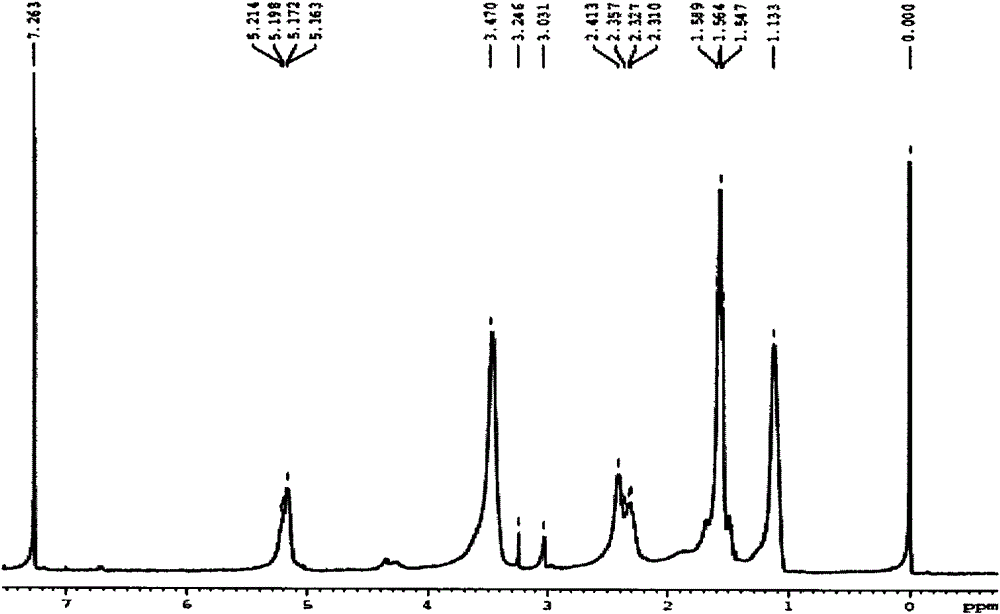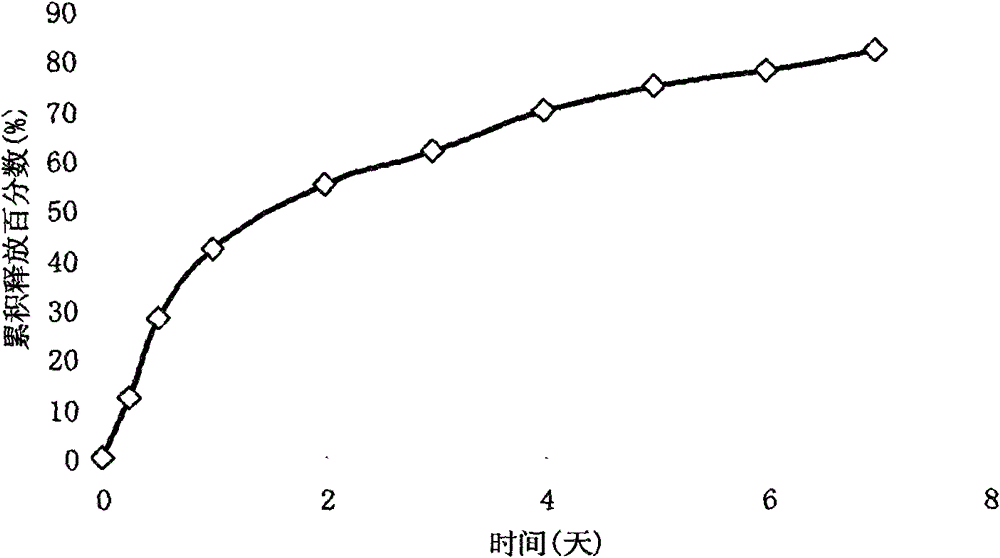Temperature-sensitive block copolymers and their hydrogels and uses thereof
A technology of block copolymer and hydrogel, which is applied in the field of temperature-sensitive block copolymer and hydrogel to achieve the effects of controllable properties, high purity and high product yield
- Summary
- Abstract
- Description
- Claims
- Application Information
AI Technical Summary
Problems solved by technology
Method used
Image
Examples
Embodiment 1
[0032] Example 1: Synthesis of poly(2-ethyl-2-oxazoline)-polylactic acid-poly(2-ethyl-2-oxazoline) (PEOz1000-PLA2300-PEOz1000)
[0033] In a three-necked flask equipped with a stirrer, 2-ethyl-2-oxazoline (10g, 150mmol), acetonitrile (40mL), methyl p-toluenesulfonate (0.47g) were added, and at an oil bath temperature of 80°C Under a nitrogen atmosphere, the reaction was stirred for 30 h. After cooling, after adding KOH in methanol solution, the reaction was continued for 4h. The solvent was removed, the residue was dissolved in THF, passed through a silica gel column, the effluent was poured into excess cold ether for precipitation, suction filtered, and vacuum-dried for 12 hours. The obtained PEOz-OH powder (4g) was dissolved in chlorobenzene (80mL), D, L-lactide (6.3g) and stannous octoate (0.63g) were added under a nitrogen atmosphere, and reacted at 140°C for 24h. The reaction solution was poured into excess diethyl ether for precipitation, filtered, and vacuum-dried at ...
Embodiment 2
[0034] Embodiment 2: the synthesis of poly(2-methyl-2-oxazoline)-polycaprolactone-poly(2-methyl-2-oxazoline) (PMOz1200-PCL2000-PMOz1200)
[0035] In a three-necked flask equipped with a stirrer, add 2-methyl-2-oxazoline (15g), acetonitrile (40mL), methyl p-toluenesulfonate (0.47g), and at an oil bath temperature of 80°C, The reaction was stirred under nitrogen atmosphere for 30h. After cooling, after adding KOH in methanol solution, the reaction was continued for 4h. The solvent was removed, the residue was dissolved in THF, passed through a silica gel column, the effluent was poured into excess cold ether for precipitation, suction filtered, and vacuum-dried for 12 hours. The obtained PMOz-OH powder (0.47g) was dissolved in chlorobenzene (40mL), caprolactone (0.47g) and stannous octoate (0.47g) were added under a nitrogen atmosphere, and reacted at 140°C for 24h. The reaction solution was poured into excess diethyl ether for precipitation, filtered, and vacuum-dried at room...
Embodiment 3
[0036] Embodiment 3: the synthesis of polylactic acid-poly(2-ethyl-2-oxazoline)-polylactic acid (PLA900-PEOz3000-PLA900)
[0037] 2-Ethyl-2-oxazoline (9.9g) and 1,4-dibromo-2-butene (420mg) were dissolved in acetone (40mL), under a nitrogen atmosphere at 100°C (stirred and refluxed for 20h. Cooled After reaching room temperature, after adding 0.1mol / LKOH methanol solution (40mL) to the reaction flask, the reaction was continued for 4h. Passed through a silica gel column, the effluent was poured into excess cold ether for precipitation, suction filtration, and vacuum-dried for 24h. HO will be obtained -PEOz-OH powder (2g) was dissolved in chlorobenzene (20mL), and D, L-lactide (0.58g) and stannous octoate (30mg) were added under a nitrogen atmosphere, and reacted at a temperature of 140°C for 24h. The reaction The solution was poured into excess diethyl ether to precipitate, filtered, and vacuum-dried at room temperature for 12 hours to obtain the triblock copolymer PLA900-PEOz...
PUM
| Property | Measurement | Unit |
|---|---|---|
| phase transition temperature | aaaaa | aaaaa |
Abstract
Description
Claims
Application Information
 Login to View More
Login to View More - R&D
- Intellectual Property
- Life Sciences
- Materials
- Tech Scout
- Unparalleled Data Quality
- Higher Quality Content
- 60% Fewer Hallucinations
Browse by: Latest US Patents, China's latest patents, Technical Efficacy Thesaurus, Application Domain, Technology Topic, Popular Technical Reports.
© 2025 PatSnap. All rights reserved.Legal|Privacy policy|Modern Slavery Act Transparency Statement|Sitemap|About US| Contact US: help@patsnap.com



